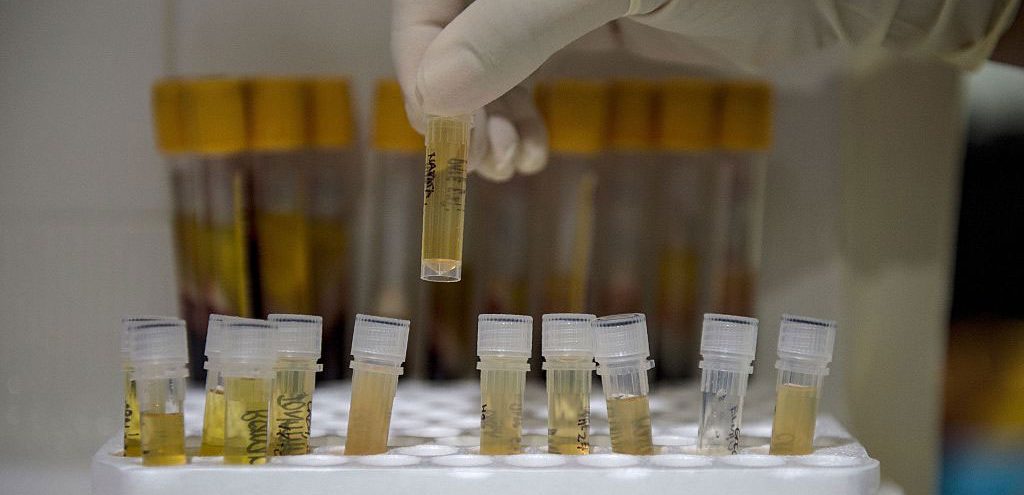Curing Cancer and HIV May Be Linked

Treatments used for cancer patients could help eradicate HIV.
Is there a cure in sight for the human immunodeficiency virus, more commonly known as HIV?
Current HIV antiretroviral therapy (ART) reduces viral cells in an infected person’s body to almost undetectable levels using a complex combination of drugs. This reduces the likelihood of transmitting the virus to another person, raises a patient’s life expectancy, and slows the disease’s progression.
However, these outcomes only last as long as a person is undergoing active therapy. Without treatment, the virus rapidly returns to dangerous levels. ART is unable to completely eradicate the HIV virus, which remain “hidden” in the patient’s body while treatment is ongoing.
While this sort of disease management was a huge step forward in helping HIV-positive patients, researchers are still trying to develop a cure that will control or eradicate HIV virus without continuous therapy.
What they have found so far is that curing HIV may be linked to the other major medical challenge of our time: curing cancer.
YOU MIGHT ALSO LIKE: Our Cancer Care Section
Treating HIV with chemotherapy
In the past two decades, several studies have used chemotherapy, one of the most common forms of cancer treatment, to target and eliminate HIV virus.
Like cancer, HIV can affect many different cells in the body. It can sometimes “hide” for several years or respond differently to medication depending on where in the body it is located. In cancer patients, these challenges are often overcome through chemotherapy treatments, which kill infected cells before they have a chance to replicate and spread cancer throughout the body.
Researchers in one study used chemotherapy in combination with ART drugs to eradicate HIV-infected cells from two patients. After the chemotherapy treatments, the two test subjects were given bone marrow transplants to rebuild their immune systems.
Unfortunately, both patients subsequently died from conditions other than HIV. But samples taken from their tissues and organs showed no signs of the virus.
Drawing on this and other research, scientists have concluded that cancer treatments, including chemotherapy, could potentially eradicate HIV virus before it can mutate and spread.
The one man cured of HIV
One of the most promising forms of treatment for both cancer and HIV is the use of stem cells, and in 2008, their use led to the first and only known instance of a patient being completely cured of HIV.
Timothy Ray Brown, sometimes known as the “Berlin Patient,” was undergoing treatment at the time for a type of cancer known as acute myeloid leukemia. As part of his cancer therapy, he received a bone marrow transplant from a donor with a rare genetic mutation: resistance to HIV.
When the donor’s stem cells were transplanted into Brown, it became apparent that the resistance has been passed on as well. A few years later, the virus was undetectable in his blood, in spite of the fact that he was not receiving treatment to suppress his HIV. He was clinically cured of the infection.
Researchers have so far been unable to replicate Brown’s cure, though they have tried similar transplants with other HIV-positive patients. However, they have made progress.
At the 2016 Towards an HIV Cure Symposium, researchers reported on a study in which HIV-positive patients had been given stem cell transplants similar to Brown’s. As a result of these transplants, the viral counts in their bodies had fallen to record low numbers, indicating the possibility of eventually curing HIV with the same stem cell transplants used to treat cancer patients.
The future of cancer and HIV research
Many researchers believe that cures for cancer and HIV will only be found if the two disciplines work together.
In July 2016, three prominent researchers published an article about the links between curing cancer and curing HIV. They pointed out that many treatments currently used to put cancer into remission were initially discovered through investigating HIV cells.
Now, that trend may be going in the opposite direction, with cancer treatments having the potential to create a similar remission for HIV patients. The three researchers call for increased cooperation between the two fields, both in terms of the studies being done and the funding available.
“Timothy Brown was cured by the work of a highly resourceful team of oncologists. His case illustrates that we need to do more to bring HIV and cancer research together — incentivizing scientists to work across diseases and ensuring that research funding allows for these synergies,” the three scientists write.
“Transformative advances in the cancer field may well provide inspiration for future directions of a strategy to guide those working towards an HIV cure.”
YOU MIGHT ALSO LIKE: The HIV Prevention Pill Is Dramatically Effective
Updated:
March 30, 2020
Reviewed By:
Christopher Nystuen, MD, MBA